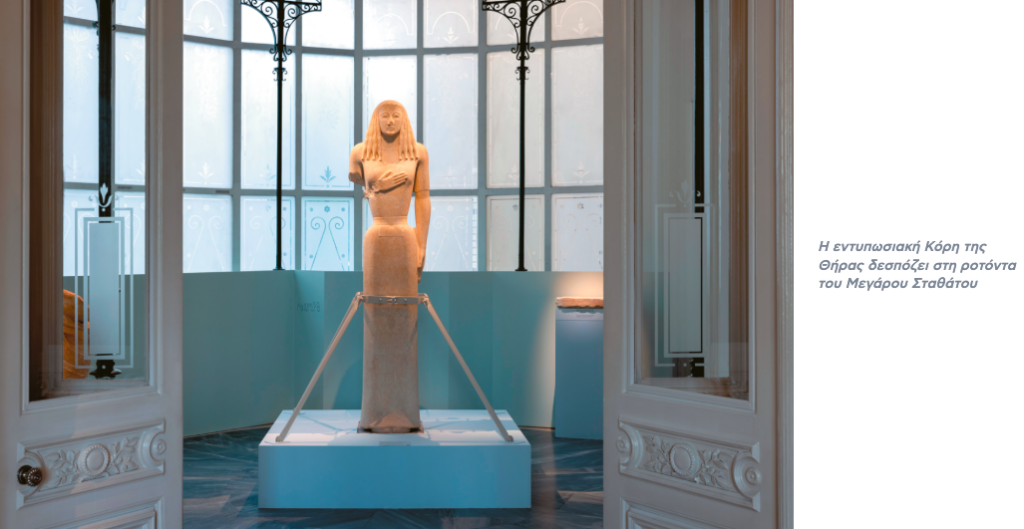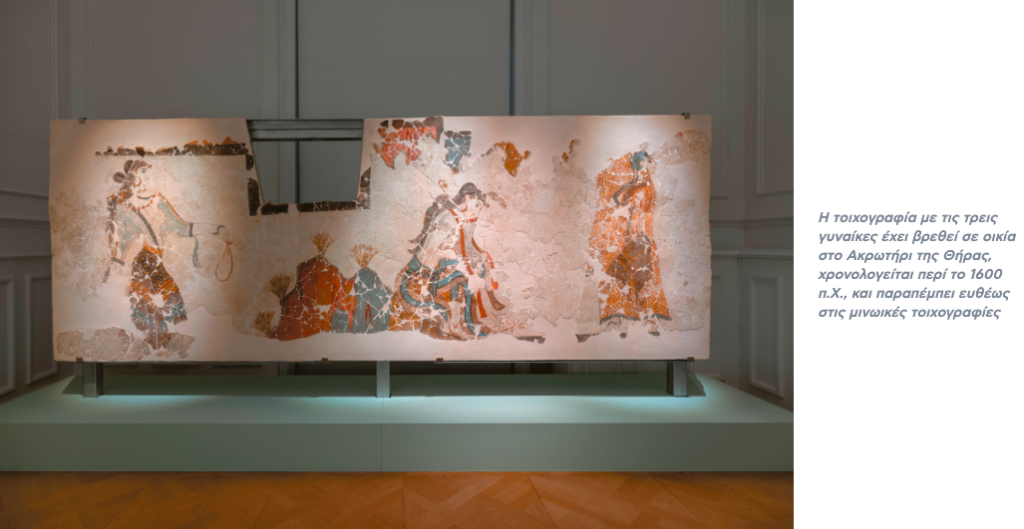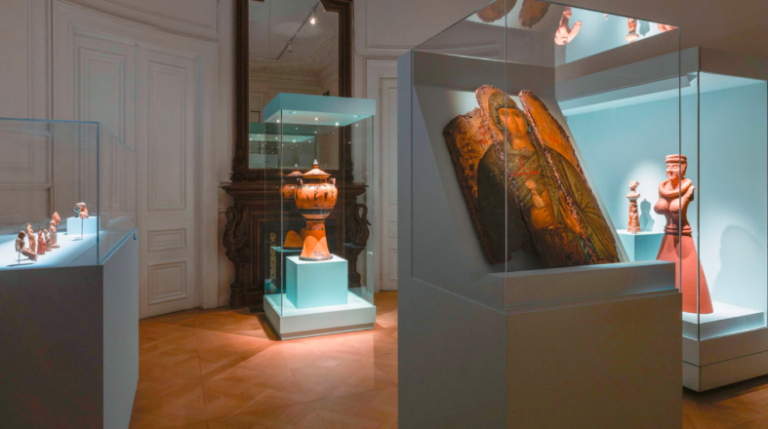In this breathtaking yet arid landscape, the bold and undoubtedly liberated women of the Cyclades, spanning centuries, from the grand marble lady of Thera—exhibited for the first time—to the exquisitely crafted clay maidens of Kea, narrate their unique stories in a remarkable exhibition at the Museum of Cycladic Art
This first-ever Pan-Cycladic exhibition not only tells history through the eyes of Cycladic women from antiquity to the present but also breaks long-standing conventions by encouraging interaction between exhibits from different periods. Titled “Cycladic Women: Untold Stories of Women from the Cyclades,” the exhibition introduces visitors to Artemis, the maiden of Delos, who reveals much about the fate of women and the island’s free spirit. Equally striking is Aline, a Phoenician slave who ended up on the island as a prostitute, dying while pregnant yet cared for tenderly by a man who honored her—a rarity for her time.
Another captivating figure is Magia Pulchra, who exemplifies female entrepreneurship in the Cyclades during Roman times, conducting business from Milos to Italy. Meanwhile, the noblewoman Neiko from Sikinos, beautiful yet abused, seems to converse directly with a depiction of a woman being struck by her husband in an ivory seal from the 8th-7th century BCE.
The Collaboration
These stories arise not only from the artifacts themselves but also from the modern, insightful presentation of the exhibition, which marks a collaboration between the Museum of Cycladic Art and leading international museums. Spearheaded by Dr. Dimitris Athanasoulis, director of the Ephorate of Antiquities of the Cyclades, and Professor Panagiotis Iosif of Radboud University in the Netherlands, the exhibition highlights a synthesis of expertise and cooperation.
For the first time, such a harmonious partnership among various institutions—namely the Museum of Cycladic Art, the Ephorate of Antiquities of the Cyclades, and the Ministry of Culture—has brought together an array of treasures. Following the successful “Chaeronea” exhibition, this event has already drawn large crowds and heralds a new era for the museum, presenting rare stories of Cycladic women with originality and sensitivity. Many of these artifacts are being displayed for the first time or have never before been seen outside their original locations.

Confirming the Cycladic people’s reputation as explorers, the “Cycladic Women” exhibition is set to travel to other venues, starting with the Archaeological Museum of Thera, which will officially open its doors this year with this impressive display. One hundred and eighty masterpieces from across the Cyclades are now accessible to the public in a single venue—a truly remarkable achievement.
Through the curators’ unique approach, these Cycladic women narrate their own stories, offering glimpses into how they lived, whether they were free or oppressed, how they married, loved, and died. Priestesses, courtesans, prostitutes, mourners, and witches reveal their roles in society and how they were perceived by both men and their communities, shedding light on the social organization of the Greek archipelago over the centuries.

Rarely do we encounter female entrepreneurs, as seen in the Cyclades during the Roman era, or women who traveled far and wide, underscoring the islands’ ever-open identity. Whether depicted as deities, priestesses, or everyday women embodying rare qualities, the Cycladic women are portrayed as uncompromising travelers, goddesses, and saints offering healing, love, and care.
The Maiden of Thera
Upon entering the central exhibition space, visitors are immediately drawn to the stunning Maiden of Thera, prominently displayed in the rotunda of the Stathatos Mansion. Majestic and imposing, she not only captivates attention but also demonstrates the grandeur of the masterpieces, many of which are being exhibited for the first time. This statue deserves its prominent place, as it is one of only two globally renowned exhibits that could alone form the foundation of the entire exhibition.
One of the three known Daedalic maidens in the world, dating back to 660-650 BCE, she stands tall at 2.5 meters. Carved from Naxian marble, she radiates beauty under the natural Athenian light. Unlike the famed “Lady of Auxerre” in the Louvre, the Maiden of Thera is more complete and visually striking. Discovered lying on her back by archaeologist Charalambos Sigalas, the statue was likely intended for a tomb but was never used due to damage sustained during its carving or transport.
The Fresco of the Three Women
Among the most impressive artifacts is the fresco of the Three Women from a residence in Akrotiri, Thera, dating to around 1600 BCE. Resembling Minoan frescoes, it offers insights into the rituals of adolescence and initiation rites. On the left stands the Woman with the Necklace, adorned in rich jewelry, suggesting she belonged to a higher social class. On the right is the Veiled Maiden, gazing in awe at the sacred ceremony, while in the center, the Wounded Woman steals the show—seated on a low rock, bleeding, and surrounded by crocus flowers symbolizing healing and renewal.
Ask me anything
Explore related questions





